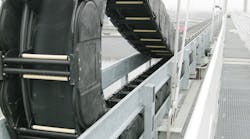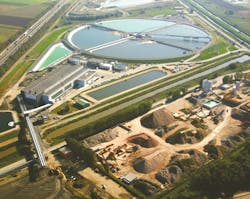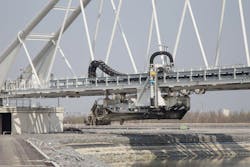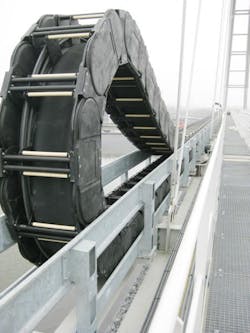The world’s largest plastic cable carrier has been installed in Belgium’s Antwerp Mechanical Dewatering, Recycling, and Application of Sludge (Amoras) plant to help process 550,000 lb of sand, silt, and water dredged each year from Antwerp harbor.
Energy Chain cable carriers are modular devices that bend and flex while protecting hoses or cables. Developed by igus inc., East Providence, R. I., they are used on the first major section of the plant: a 1,150-ft-diameter circular holding basin. The multilink carriers protect hoses that run from two high-power pumps mounted on either side of the 560-ft dredging bridge that stretches from the center of the basin to the perimeter. The bridge can swing 360° to get to any of the basin’s four sections while the pumps are independently moved along the bridge from the center of the basin to the perimeter to reach different areas of that section.
The cable carrier has proven capable of supporting the hoses while they carry sludge at up to 2,000 ft3/hr, or about 70 lb/ft of Energy Chain. The carrier is also light enough that structural engineers on the project could use smaller motors to move the sludge pumps and to rotate the dredging bridge. Project managers are also confident the Energy Chain will last the estimated 15-year lifespan for the processing plant.



